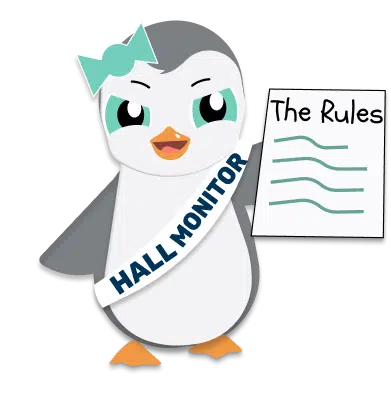Ever felt like you’re speaking a different language when giving instructions to your child? You’re not alone! The ability to follow instructions is fundamental to the successful completion of a multitude of behaviors in childhood, including the use of technology, learning to cook, and engagement in leisure activities from board games to sport. Many parents and caregivers face this challenge with their neurodivergent kids. In this guide, we’ll explore why some kids struggle to follow instructions and share practical steps to help them succeed. So, let’s jump in and turn those moments of confusion into victories of understanding!
Table of Contents
Discover the Reason
First, figure out why your child might struggle to follow instructions. Some kids have trouble paying attention, understanding words, or may feel nervous. Watch your child closely and think about talking to a professional to find the main reason.
Understanding the Root Cause Is Essential for Finding the Right Approach.
Here are some common reasons kids struggle with instructions:
- Attention difficulties
- Processing delays
- Anxiety or stress
- Language barriers
| Reason | Description |
|---|---|
| Executive Function | A group of skills needed to complete tasks |
| Information Processing | Difficulty processing information or listening to what others are saying |
| Memory | A poor memory can make it difficult to remember all the steps involved in following instructions |
| Attention | Distractions or lack of focus can make it difficult to follow instructions |
| Metacognition | Poor monitoring of learning can make it difficult to follow instructions |
| Working Memory | A fundamental brain function that connects perception, attention, and long-term memory |
Make It Simple
Big tasks can be hard for kids with thinking and learning differences. To help them, break tasks into smaller steps. Use easy-to-understand words and pictures to explain each step.
For example, if you want your kid to clean their room, break it down like this:
- Pick up toys and put them in the toy box.
- Put dirty clothes in the laundry basket.
- Wipe down surfaces with a cloth.
- Vacuum the floor.
Visual aids, such as charts or diagrams, can also be helpful for kids who struggle to follow instructions.

Read More: Following Instructions Worksheet
Stay Steady and Calm
Being consistent and patient is important when helping kids who struggle to follow instructions. Create routines and follow them to make your child feel safe and secure. Also, give them enough time to understand what you’re saying.
Establishing Routines Can Help Your Child Feel More Comfortable and Confident.
Some examples of routines include:
- Morning routine: waking up, brushing teeth, getting dressed, eating breakfast
- After-school routine: snack time, homework, playtime, dinner
- Bedtime routine: bath, pajamas, storytime, lights out

Cheer Them On
Celebrate your child’s wins, even the small ones. Positive reinforcement helps build their confidence and excitement. Give praise, rewards, or a high-five to show you’re proud of their efforts when they don’t struggle to follow instructions.
Here are some ways to offer positive reinforcement:
- Verbal praise: “Great job following instructions!”
- Rewards: stickers, extra playtime, or a special treat
- Non-verbal encouragement: hugs, smiles, or thumbs up
Teach Active Listening
Show your child how to listen carefully by doing it yourself. Look at them, nod, and ask questions to show you’re paying attention. Please encourage your child to do the same when they receive instructions and practice this skill together during everyday talks.
Active listening tips for kids:
- Make eye contact with the person speaking
- Nod or smile to show understanding
- Repeat instructions back to ensure comprehension
- Ask questions if something is unclear

Read more: How to Use Autism Communication Strategies
Change How You Communicate
Every kid is different, so changing how you talk to fit their needs is important. Try using pictures, hand movements, or even tools like Goally’s learning tablet to find what works best for your child when they’re struggling to follow instructions.
Experiment with different communication styles:
- Visual: use pictures, charts, or diagrams
- Auditory: speak clearly and slowly, or try using songs or rhymes
- Kinesthetic: use gestures or physical prompts, like tapping on the shoulder
- Technological: incorporate apps or devices designed for kids with learning differences
Get Expert Help
If your child struggles to follow instructions after trying these steps, consider getting professional help. Experts like occupational therapists, speech therapists, and special education teachers can give you helpful tips and ideas to support your child’s growth.
Professionals who can help:
- Occupational therapists: work on fine motor skills and sensory processing
- Speech therapists: help with language and communication challenges
- Special education teachers: provide tailored instruction and support in school settings

Goally | Apps That Build Behavior & Life Skills for Kids
Want to keep your child motivated while building essential behavior and life skills? Goally’s skill-building tablet is designed to celebrate small wins and help your child grow.
Our Behavior Tracker helps you reward your kiddo for specific skills, like “being kind” or “flushing the toilet.”
By setting clear expectations and rewarding their efforts, you foster a positive environment for your child to flourish in their behavioral skills journey.

Supporting children who find it difficult to follow instructions can indeed be a tough task. Yet, with a blend of patience, empathy, and effective strategies, you can create a profound impact on their lives. Always bear in mind that each child is one-of-a-kind, and discovering the approach that suits them best is key. Continue your fantastic efforts, and witness the incredible growth and development in your child!
FAQ’s About The Struggle to Follow Instructions
Why does my child struggle to follow instructions? Your child might struggle due to factors like executive function, information processing, memory, attention, metacognition, or working memory issues. How can I help my child who struggles to follow instructions? Patience, understanding, and implementing the right strategies tailored to your child's needs can significantly help. Can learning tools assist my child in following instructions? Yes, learning tools like visual schedules, emotional regulation apps, and rewards can be beneficial in helping your child follow instructions. What is an emotional regulation app? An emotional regulation app is a digital tool designed to help children understand and manage their emotions effectively. How can rewards help my child follow instructions? Rewards can motivate your child to follow instructions by reinforcing positive behavior and making the learning process more enjoyable.
This blog was originally published on 04/11/2023. It was updated on 02/16/2024.

Goally
We help parents teach their kids life skills, like doing bedtime and morning independently. Backed by science, we incorporate evidence-based practices and expert-informed designs in all of our apps and content.






